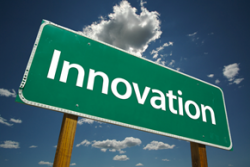On March 14th, I published a HealthBlog post called Disrupting and Destructing Healthcare. It has been widely distributed around the web and has had thousands of views. In that piece, I argued for showing a little compassion to healthcare providers in this challenging time of change.
On March 14th, I published a HealthBlog post called Disrupting and Destructing Healthcare. It has been widely distributed around the web and has had thousands of views. In that piece, I argued for showing a little compassion to healthcare providers in this challenging time of change. I cautioned that words like disruption and (creative) destruction while perhaps perfectly describing the changes taking place, are bound to make hard-working doctors, nurses and others who toil everyday on behalf of their patients feel unappreciated, rejected or even bullied. After all, nobody likes to think that everything you know and love about what you do is about to undergo massive change.
As a physician who practiced for nearly two decades before getting deeply involved in technology, I will admit to having of bit a split personality on this issue. I find myself being very sympathetic to my healthcare professional colleagues who trained long and hard to do what they do. However, as a technologist, I find myself being very frustrated with the healthcare industry. I’m frustrated that it is taking so long for healthcare to go “fully digital”. I’m frustrated by the information siloes and slow adoption of contemporary software, services and solutions that could readily transform the delivery of healthcare services and dramatically improve the patient experience. And, as a healthcare consumer personally confronted more and more by the high costs and total lack of transparency of just about everything associated with healthcare, I’m not only frustrated– I get downright angry. For the majority of Americans who have any money at all, there is nothing very affordable about the “Affordable Care Act”. And for baby boomers contemplating retirement, they will soon discover if they haven’t already, that a very significant portion of their monthly income and retirement savings will go toward healthcare and medical expenses.
So, bring on the cloud! Open the public data repositories. Shine a very bright light on spending, prices and costs. Give consumers real choice. Tell them the facts. Explain what really works and what doesn’t. Drive out the charlatans and the fraudsters. Make the industry accountable, and patients armed with information, more responsible. Use technology to streamline communication, collaboration and clinical workflow. Drive innovation to quickly implement proven best practices at scale. Let your voices be heard. Healthcare is just too important. Maintaining the status quo is not an option.
From my own travels and what I learn everyday in communication with my Microsoft and clinical colleagues, I’m encouraged by many of the positive developments currently underway. Whether it’s lessons from the recent World of Health IT meetings in France, BI advances in Norway, cloud services implementations in Australia, new application developments in Holland, patient engagement breakthroughs in Boston, or increasing consumer demand for IT in healthcare—it all bodes well for moving health and healthcare in a direction where it most certainly needs to go. And, to my way of thinking, we can’t get there fast enough.

